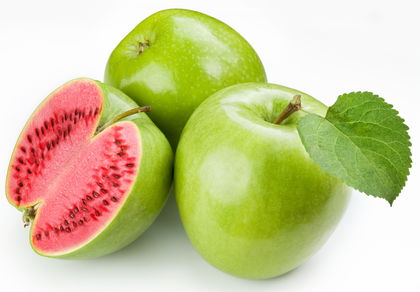Mutation

A mutation is a permanent change in a gene that is passed from one generation to the next. An organism born with a mutation can look very different from its parents. People with albinism—the lack of color in the skin, hair, and eyes—have a mutation that eliminates skin pigment. Dwarfs are an example of a mutation that affects growth hormones.
Mutations are usually harmful and often result in the death of an organism. However, some mutations may help an organism survive or be beneficial to a species as a whole. In fact, useful mutations are the driving force behind evolution.
Changes in DNA
Until the mid-1950s, no explanation for the sudden appearance of mutations existed. Today we know that mutations are caused when the hereditary material of life is altered. That hereditary material consists of long, complex molecules known as deoxyribonucleic acid (DNA).
Every cell contains DNA on threadlike structures called chromosomes. Sections of a DNA molecule that are coded to create specific proteins are known as genes. Proteins are chemicals produced by the body that are vital to cell function and structure. Human beings carry about 100,000 genes on their chromosomes. If the structure of a particular gene is altered, that gene will no longer be able to perform the function it is supposed to perform. The protein for which it codes will also be missing or defective. Just one missing or abnormal protein can have a dramatic effect on the entire body. Albinism, for instance, is caused by the loss of one single protein.
A molecule of DNA itself is made up of subunits known as nucleotides. Four different nucleotides are used in DNA molecules. They are commonly abbreviated by the letters A, C, G, and T. A typical DNA molecule could be represented, for example, as shown below:
-A-T-C-T-C-T-G-G-C-C-C-A-G-T-C-C-G-T-T-G-A-T-G-C-T-G-T-
Each group of three nucleotides means something specific to a cell. For example, the nucleotide CCT tells a cell to make the amino acid glycine. The string of nucleotides shown above, when read three at a time, then, tells a cell which amino acids to make and in what sequence to arrange them. The proper way to read the above molecule, then, is in groups of three, as shown below:
-A-T-C - T-C-T - G-G-C - C-C-A - G-T-C - C-G-T - T-G-A - T-G-C
But a DNA molecule can be damaged. A nucleotide might break loose from the DNA chain, a new nucleotide might be introduced into the chain, or one of the nucleotides in the chain might be changed. Suppose that the first of these possibilities occurred at the fifth nucleotide in the chain shown above. The result would be as follows:
-A-T-C - T- -T - G-G-C - C-C-A - G-T-C - C-G-T - T-G-A - T-G-C-
Words to Know
Amino acid: A relatively simple organic molecule from which proteins are made.
Deoxyribonucleic acid (DNA): A large, complex molecule found in the nuclei of cells that carries genetic information.
Gene: A section of a DNA molecule that carries instructions for the formation, functioning, and transmission of specific traits from one generation to another.
Mutagen: Any substance or any form of energy that can bring about a mutation in DNA.
Nucleotide: A unit from which DNA molecules are made.
Protein: A complex chemical compound that consists of many amino acids attached to each other that are essential to the structure and functioning of all living cells.
Triad: A group of three nucleotides in a DNA molecule that codes for the production of a single, specific amino acid.
In this case, reading the nucleotides three at a time, as a cell always does, results in a different message than with the original chain. In the original chain, the nucleotide triads (sets of three nucleotides) are ATC TCT GGC CCA, and so on. But the nucleotide triads after the loss of one nucleotide are ATC TTG GCC CAG, and so on. The genetic message has changed. The cell is now instructed to make a different protein from the one it is supposed to make according to the original DNA code. A mutation has occurred.
A mutation can also occur if a new nucleotide is introduced into the chain. Look at what happens when a new nucleotide, marked T*, is introduced into the original DNA chain:
-A-T-C - T-C-T - T*-G-G-C - C-C-A - G-T-C - C-G-T - T-G-A
The nucleotide triads are now ATC TCT TGG CCC AGT, and so on. Again, a message different from the original DNA message is relayed.
Finally, a mutation can occur if a nucleotide undergoes a change. In the example below, the fifth nucleotide is changed from a C to a T:
-A-T-C - T-T-T - G-G-C - C-C-A - G-T-C - C-G-T - T-G-A - T-G-C
It is obvious that the genetic message contained here is different from the original message.
Causes of mutation
Under most circumstances, DNA molecules are very stable. They survive in the nucleus of a cell without undergoing change, and they reproduce themselves during cell division without being damaged. But accidents do occur. For example, an X ray passing through a DNA molecule might break the chemical bond that holds two nucleotides together. The DNA molecule is destroyed and is no longer able to carry out its function.

Anything that can bring about a mutation in DNA is called a mutagen. Most mutagens fall into one of two categories: They are either a form of energy or a chemical. In addition to X rays, other forms of radiation that can cause mutagens include ultraviolet radiation, gamma rays, and ionizing radiation. Chemical mutagens include aflatoxin (from mold), caffeine (found in coffee and colas), LSD (lysergic acid diethylamide; a hallucinogenic drug), benzo(a)pyrene (found in cigarette and coal smoke), Captan (a fungicide), nitrous oxide (laughing gas), and ozone (a major pollutant when in the lower atmosphere).
[ See also Carcinogen ; Chromosome ; Genetic disorders ; Genetics ; Human evolution ]
Comment about this article, ask questions, or add new information about this topic: